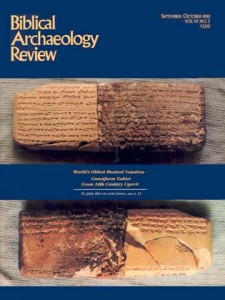Glossary of Musical Terms
Sidebar to: World’s Oldest Musical Notation Deciphered on Cuneiform Tablet
Interval: The distance between two tones. On the staff it is counted from the lower to he higher and a number is given to each line and space including both notes.
Octave: The interval with the higher tone twice the frequency of the lower. For example, a = 440Hz a’ = 880Hz. It is a perfect consonance creating no interference waves. It is also an interval of eight white notes on the piano.
Scale: The division of the octave into some logical or useful series of pitches. The term scale indicates ascending by steps of some kind.
Half-step: On the piano keyboard it is the next adjacent tone 1/12 of an octave.
Whole-step: On the piano keyboard it is the distance between tones two half-steps apart.
Diatonic: The natural scale of five whole and two half steps arranged like the white notes on the piano keyboard. Each degree of the scale has its own letter name (A, B, C, D, E, F, G).
Heptatonic: Hepta (Greek 7) seven tone division of the octave. One example of a heptatonic scale is the “do-re-mi” scale.
Third: An interval of three steps; an imperfect consonance which our ears accept as pleasing.
Fifth: An interval of five steps. Like the octave the fifth creates no interference waves. In equal temperament tuning our fifths are slightly smaller than in perfect tuning, not enough to bother most listeners but enough to allow all of the half-steps to be of equal size and to allow for key changing within a piece.
Already a library member? Log in here.
Institution user? Log in with your IP address.

